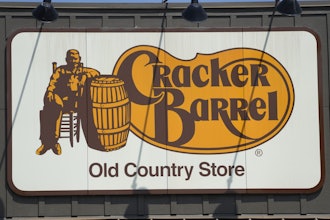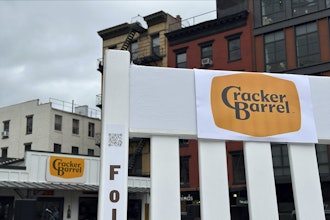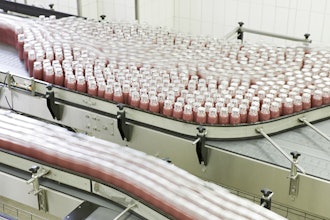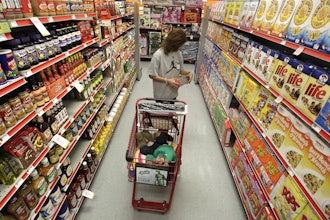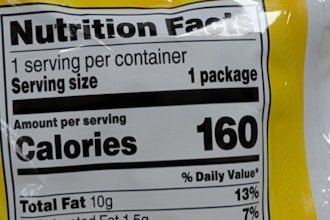
Despite the COVID-19 pandemic, the number of putative class actions targeting the food and beverage industry increased in 2020 and show no signs of slowing down in 2021. The number of class actions filed against beverage companies in New York increased while the number of cases filed in California decreased. While the Northern District of California, which had become known as the “food court” remained a popular jurisdiction for these suits, filings in New York outpaced those in California. The factual basis of the claims also continues to evolve. Early cases challenged the description of food and beverages as “all natural” when the products contained additives allegedly rendering the “all natural” representation false and misleading.
Recent cases are increasingly focused on other claims made on food labels, including whether identified ingredients or flavors are artificial, the claims made about functions of certain ingredients, or claims made about aspects about the supply chain for those ingredients. Lawsuits continue to be filed about the origin of the ingredients, the use of sweeteners, the number of servings in packaged goods, the treatment of animals, and the impact on the environment in producing the products.
Trends in Recently Filed Class Actions
 iStock
iStock
- More claims based on representations regarding ingredients (e.g., natural vanilla, pure honey)
- More claims based on origin of products (e.g. Italian olive oil, macadamia nuts made in Hawaii, Australian beer, American Tabasco sauce)
- More suits focused on the absence or presence of ingredients (e.g., citric acid as a favor or as a preservative where a “no preservative” claim is made on a label)
- More suits focused on sweeteners (e.g. excess sugar, characteristics of artificial sweeteners, presence of artificial sweeteners)
- More underfill claims for packaged and made-to-order products related to the number of servings
- More claims based on ancillary representations regarding the product (e.g. “sustainably farmed,” or “humanely raised”)
Developments in Recently-Filed Food and Beverage Class Actions
Plaintiffs continue to file class action complaints against food and beverage companies because plaintiffs lawyers perceive that they have settlement value. Class actions arising from consumer products can have classes with hundreds of thousands, or perhaps millions, of putative class members. Accordingly, even settlements that offer very small monetary relief to each member of the class may be largely based on the number of class members. These settlements can also include significant attorneys’ fee awards. For example, a coffee maker recently paid $25 million, including $8.325 million in attorneys’ fees, to settle a false advertising case where plaintiffs alleged that its coffee pods were filled with instant coffee rather than the labeled premium ground coffee.[1]
Claims regarding the presence, absence or source of vanilla continue to proliferate.[2]
New Theories Emerge: Sustainability and Animal Treatment
 iStock
iStock
Sourcing and sustainability claims made by food manufacturers continue to be a focus of the plaintiffs’ bar. In Ehlers v. Ben & Jerry’s Homemade Inc.,[3] the plaintiff alleged that advertisements that the food manufacturer’s dairy products come from “happy cows” on “Caring Dairy” farms led her to believe that the ice cream products are “sourced exclusively from ‘happy cows’ on Vermont dairies that participate in a special, humane ‘Caring Dairy’ program.” In reality, according to plaintiff, the milk and cream was sourced from a variety of dairies, including mass-production facilities that employed extensive confinement practices and use of antibiotics. Based on these allegations, the plaintiff alleged claims for false advertising. The court dismissed the suit reasoning that the allegedly false statement was taken out of context and the plaintiff ignored the totality of the company’s representations.
The court concluded that plaintiff’s allegations ignored the context of Ben & Jerry’s advertising. The text on the back of Ben & Jerry’s cartons of ice cream states in relevant part: “We strive to make the best possible ice cream in the best possible way. We source Non-GMO ingredients, Fairtrade cocoa & sugar, eggs from cage-free hens & milk & cream from happy cows. Learn more at benjerry.com.” The website explains that the Caring Dairy program is “a unique program that’s helping farmers move toward more sustainable practices on the farm.” The Caring Dairy Standards set forth the “basic” standards to be considered a Caring Dairy farm as well as the detailed eligibility requirements for higher levels of status. Nothing on the packaging or the website stated that Ben & Jerry’s sourced its ingredients exclusively from Caring Dairy farms. The court concluded that “because neither Ben & Jerry’s products nor its website represents that its ingredients are ‘sourced exclusively’ from Caring Dairy farms, Plaintiff’s entire claim is grounded on a single phrase in a single heading on a multipage website which is neither false nor misleading when considered as a whole.”
Claims regarding the recyclability of packaging have survived motions to dismiss and have been certified as class actions. Keurig Green Mountain’s label for its K-Cup pods claimed that they were recyclable. Though the statement was qualified, plaintiffs alleged that the qualification was misleading because the pods were not recyclable in more than 60 percent of communities nationwide and, further, that the lids and filters of the pods impede their ability to be recycled. In considering the motion to dismiss, the court noted that “common sense would not so clearly lead a person to believe that a package labeled ‘recyclable’ is not recyclable anywhere” and, accordingly, denied the motion to dismiss.[4] Subsequently, the court granted plaintiff’s motion for class certification.[5]
What is a Food and Beverage Company To Do?
 iStock
iStock
A December 2020 decision from the Ninth Circuit confirms that nutrition fact panel and ingredient disclosures provide information that can be used to support a motion to dismiss and remain important tools for defeating consumer class actions.[6] In that case, the plaintiff alleged that the manufacturer of Pop Secret brand popcorn engaged in unfair practices, created a nuisance, and breached the warranty of merchantability by including partially hydrogenated oils (“PHOs”) as an ingredient. The Ninth Circuit affirmed the dismissal of the complaint concluding that plaintiff did not plausibly allege that she was harmed by the popcorn. The Ninth Circuit recognized that while plaintiff “may have assumed that Pop Secret contained only safe and healthy ingredients, her assumptions were not included in the bargain, particularly given the labeling disclosure that the product contained artificial trans fat.” Absent some allegation that the manufacturer made false representations about Pop Secret’s safety, the claim could not proceed. The Ninth Circuit confirmed that the district court properly rejected plaintiff’s allegation of actual harm based on an increased risk of disease because the allegations were too speculative.
In a recent case where the putative class alleged that Sue Bee honey was falsely labeled as being “pure” and “100% pure” where the products contained trace amounts of glyphosate, the court granted summary judgment concluding that the consumer survey relied upon by plaintiff “avoided the relevant question” of whether a reasonable consumer would interpret the term “pure” to exclude trace amounts of glyphosate.[7]
While plaintiffs’ counsel pursuing claims against food and beverage companies continue to advance new claims and theories, courts are continuing to apply a reasonable consumer standard to assess the claims. Applying that standard, courts are sometimes willing to dismiss suits where the subjective expectations of an individual plaintiff are atypical.[8] Likewise, claims are subject to dismissal where the claims are based on statements that are non-actionable “puffery.”[9] General, vague statements about a product’s superiority, rather than a misdescription of a specific or absolute characteristic of the product, may lead to dismissal of the claim if the court finds it implausible that a reasonable consumer would view the label statement or marketing materials as a specific, verifiable claim. If a claim survives a motion to dismiss, establishing that the suit should not proceed as a class action becomes the next line of defense.
###
Robert Guite is a partner in Sheppard, Mullin, Richter & Hampton LLP’s Business Trial practice group and a member of the Food and Beverage team. Sascha Henry, also a partner in the firm’s Business Trial practice group, leads the firm’s Food and Beverage industry team. They have extensive experience defending food and beverage clients and retailers in class actions involving allegations of unfair competition and false advertising. They can be reached at [email protected] and [email protected], respectively.
[1] Suchanek v. Sturm Foods, Inc.,, S.D. Ill. Case No. 3:11-cv-00565 (Dkt. No. 463, April 21, 2020)
[2] See, e.g., Vizcarra v. Unilever United States, Inc., N.D. Cal. Case No. 4:20-cv-02777; Sajnanio v. The Hain Celestial Group, Inc., S.D.N.Y. Case No. 1:20-cv-04281.
[3] 2020 U.S. Dist. LEXIS 80773 (D. Vt. May 7, 2020),
[4] Smith v. Keurig Green Mountain, Inc., 393 F.Supp.3d 837, 847 (N.D. Cal. 2019).
[5] Smith v. Keurig Green Mountain, Inc., 2020 U.S. Dist. LEXIS 172826 (N.D. Cal. Sep. 21, 2020).
[6] McGee v. S-L Snacks Nat'l, 982 F.3d 700 (9th Cir. 2020).
[7] Tran v. Sioux Honey Ass’n Coop., 2020 U.S. Dist. LEXIS 124389 (C.D. Cal. July 13, 2020).
[8] Cheslow v. Ghirardelli Chocolate Co., 445 F. Supp. 3d 8 (N.D. Cal. 2020) (granting motion to dismiss reasoning that a reasonable consumer seeing “white chips” on front of pack refers to the color of the product not to chocolate).
[9] Silver v. BA Sports Nutrition, LLC, 2020 U.S. Dist. LEXIS 99320 (N.D. Cal. June 4, 2020).










